A blown head gasket is one of the more annoying and expensive problems that could happen to a vehicle owner. That's because it can directly lead to replacing the engine of one's car. So, we did intensive research on the question that everyone has on their mind, can one replace a head gasket without removing the engine?
Surprisingly enough, the answer is yes. Although, this doesn't apply to every car model.
Additionally, professionals don't recommend that you replace the head gasket without removing the engine, as it could lead to further complications.
This article will discuss why replacing the head gasket without removing the engine is not so practical. On top of that, we will also talk about some common symptoms when analyzing whether your car is suffering from a blown head gasket or not.
So, continue reading through this article to find out more.
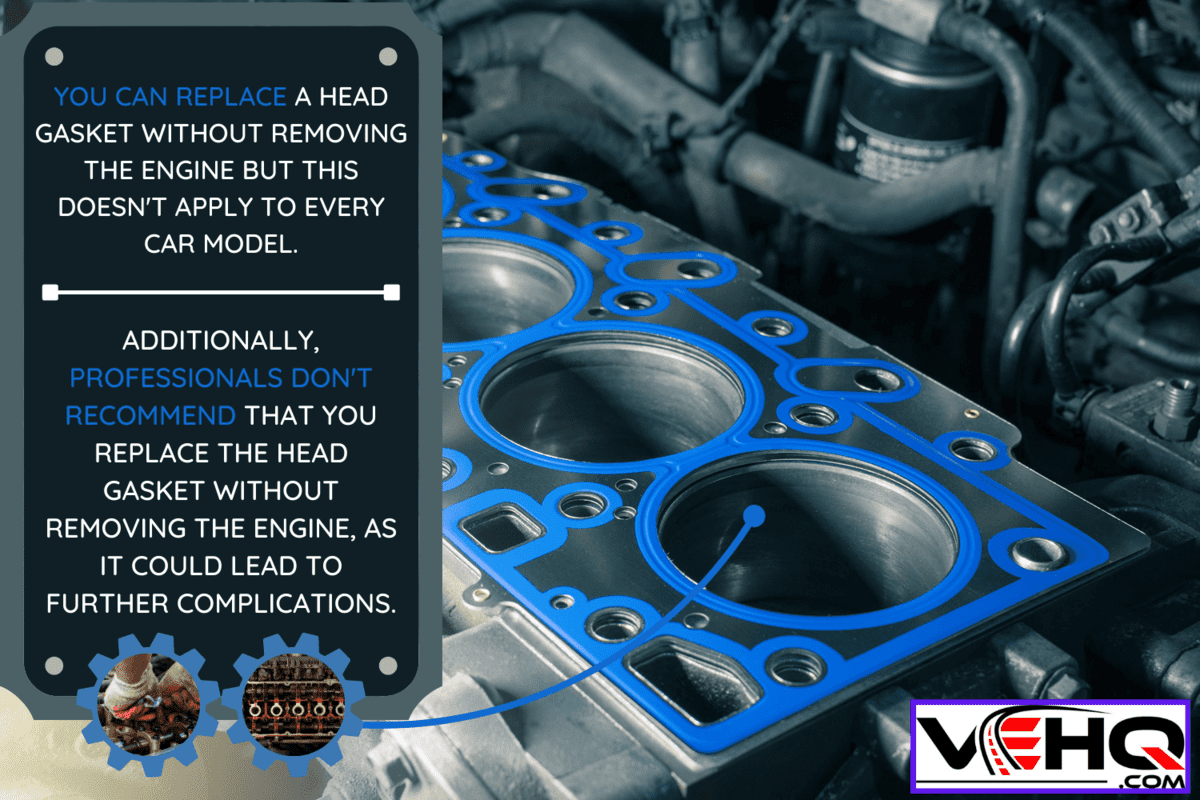
Replacing The Head Gasket Without Removing The Engine, Is It Worth It?
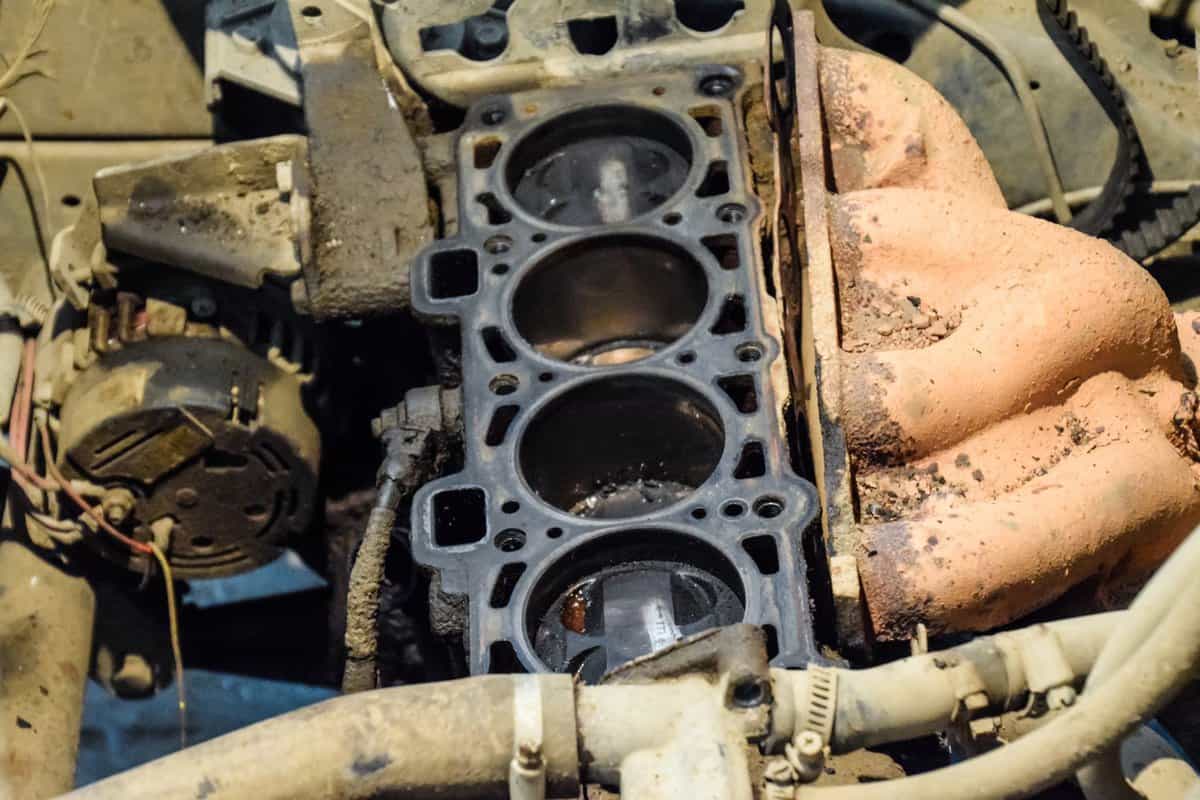
A blown head gasket is a pain to deal with. So, if there's a way to replace it without removing the engine, it makes life a lot easier, right?
Sadly, there are a few reasons why you must remove the engine when replacing the head gasket. First, front-wheel drive applications require you to drop the engine and front cradle altogether, along with the transmission.
This makes it easier for you to repair and replace the head gasket.
Another thing to note is that it's generally much safer for you and your vehicle. When replacing the head gasket, you still have to remove several connections. Once done, only a few screws are holding the engine together.
It would be much safer for you to remove the engine altogether or keep it in place with the use of a crane or a hoist. This way, you prevent any more damages to your car that could result in losing money in your bank account.
And last but not least, removing the engine will allow you to check for any hidden damages. This enables you to know whether only the head gasket needs replacing or if the engine does as well.
Check this head gasket on Amazon.
What Is The Importance Of A Head Gasket?
Despite how unassuming it looks, the head gasket is an integral part of your car. That's why any faults related to it could prove to be damaging in the long run.
The head gasket is responsible for sealing the two halves of your car's engine. It allows your engine to run properly for years without the risk of leaks and accidental spills from inside.
Sadly, those years contribute to a head gasket breaking down as it accumulates severe wear and tears throughout its lifespan. Head gaskets can crack, dry out, and eventually break when not properly maintained. This results in fluids like oil, coolant, and fuel ending up in different parts of the engine where they shouldn't be.
When this happens, it's highly likely for your engine to stop working within a few minutes of starting your car. And the longer you let this matter unresolved, the more severe the damages get.
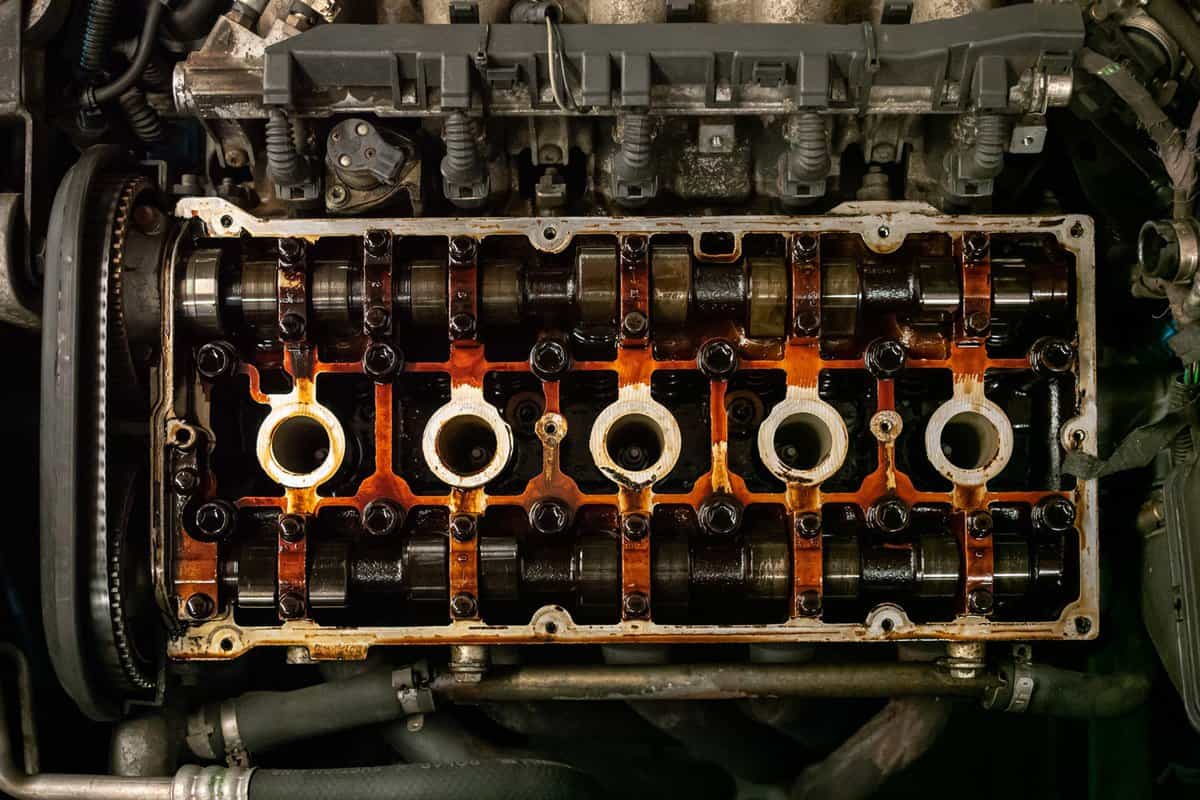
What Are The Common Symptoms Of A Blown Head Gasket?
There are a few ways to tell whether or not your car is suffering from a blown head gasket. And in this section, we will discuss the most common symptoms and explain each in detail.
Engine Overheating
More often than not, this is usually a two-way street. First, the hot engine could cause other parts nearby to swell in size, allowing the head gasket to leak different fluids. Or, the head gasket started leaking fluids into the wrong places due to wear and tear.
Whichever one it may be, your engine overheating becomes a straight road that leads to engine failure. You won't be able to drive your car for long and far due to this. And if you try to force the issue, you're further expanding the current damage to the car.
Engine Misfiring
When your car fails to start or doesn't last long after firing the engine, the chances of having a blown head gasket are high. So, check underneath the hood for cracks or gaps within the head gasket.
Any unwanted fluid leaks can lead to a failed combustion. And even if your car starts after a couple of tries, this is an issue you should not overlook. Or else it can lead to engine failure down the line.
Rough Idle
When you're in the middle of a heavy traffic jam or going through a packed drive-thru, letting your car idle is common. It also gives you a good idea of your car's condition.
Any rough movements or jerkiness from your car when idling is a cause for concern. The same goes when it starts moving poorly after idling. This is a sign that your car's head gasket is showing signs of cracks and is slowly leaking fluids into different parts of the engine.
Coolant Loss
This symptom is closely related to when your engine overheats. That's because the coolant fluid regulates the engine's temperature.
So, if your car's engine overheats, then a coolant loss is not far behind. Additionally, the scent of something sickeningly sweet and the appearance of a colored puddle underneath the car are also telltale signs of coolant loss.
Visible Exhaust Smoke
Earlier, we discussed how fluid leaks inside the engine could cause it to misfire. However, that's not the only sign to be wary of when dealing with a blown head gasket.
Small amounts of coolant can also leak into the combustion chambers. The engine burns this alongside the fuel, causing your tailpipe to produce visible smoke.
So if your car is producing heavy amounts of white or gray smoke, it's usually a sign of something wrong with the head gasket.
Milky Discoloration Under Oil Cap
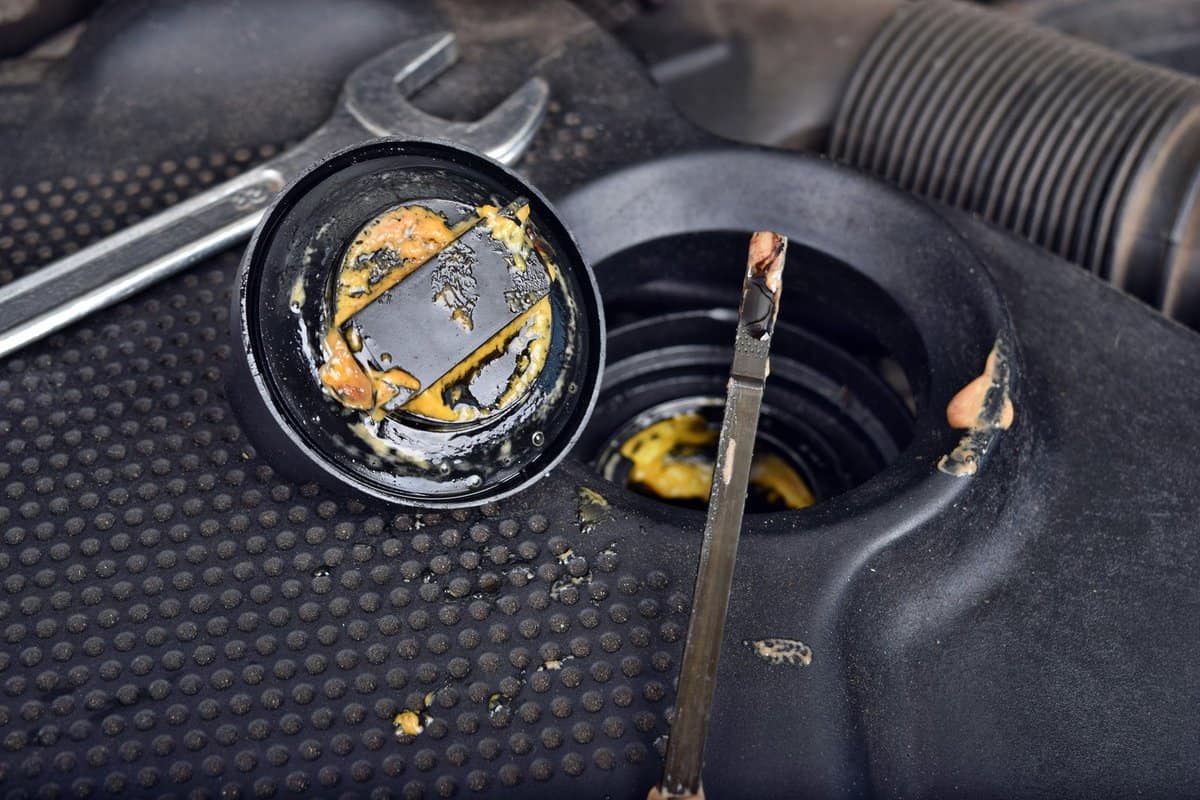
One of the easiest ways to tell whether or not you have a blown head gasket is by checking underneath the oil filler cap. What you want is for it to be mostly dry and show no signs of something out of the ordinary.
But if you discover a milky residue with the thickness of semi-melted ice cream, you know something is up.
This occurs when coolant leaks into the engine oil. The corresponding mixture leads to an off-white to brown color and, as such, is a sign that there are cracks within the head gasket.
How Much Does It Cost To Repair A Blown Head Gasket?
Generally, the repair cost of dealing with a blown head gasket is somewhere between $1,000 to $2,000. In some cases, the amount could exceed that, depending on the severity of the damage.
The car model also contributes to the high price tag since some expensive and high-class models require a particular head gasket for repairs.
It's also not surprising that the repair cost can reach those numbers as the required labor amount can reach hours depending on the problem.
Inspecting for any other damages to other areas nearby, removing the engine, and placing it back inside are just some of the tasks a mechanic needs to do when replacing a blown head gasket.
No matter how cheap the head gasket of your car model is, the labor cost always trumps that.
Additionally, a mechanic can resolve several car problems within the time required to repair a blown head gasket. Hence, this also contributes to the expensive price tag.
And as we talked about earlier, replacing the head gasket without removing the engine is generally a bad idea. While it could lead to faster repairs and less money spent, it isn't worth all the complications.
Any attempts to replace the head gasket by yourself simply aren't worth it. Not only do you run the risk of severely damaging the car, but you're also exposing yourself to unnecessary danger.
Are There Products That Quickly Repair A Blown Head Gasket?

There are chemical products on the market that immediately treats a blown head gasket. However, it usually depends on the severity of the situation.
If your car dies after running for less than 15 minutes, then there's no current product that could treat this issue. However, if your car starts running beyond that number, then a head gasket repair fluid can help seal any cracks.
First, you pour the chemical fluid inside the engine via the radiator. From there, it will seek out and seep into any cracks within the head gasket. The resulting heat from the engine will be enough to harden the chemical, thereby completing the repair.
However, if the same symptoms that make you think your car is suffering from a blown head gasket persist, it's best to bring your car to an automobile shop. A professional mechanic will help you determine what else could be wrong with your car.
Check this head gasket repair fluid on Amazon.
To Wrap Up
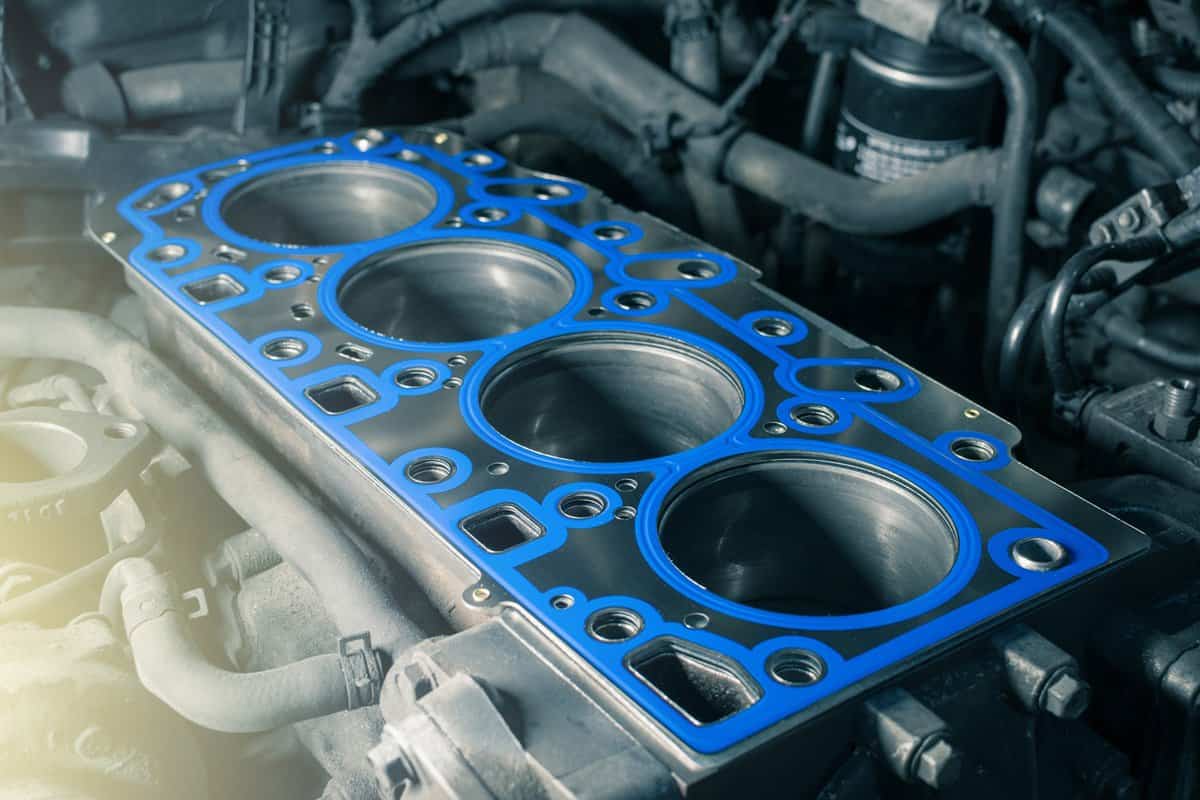
Keeping it short, replacing the head gasket without removing the engine on certain cars is possible. Although, it isn't practical to do so. Because by the time you're halfway near replacing the head gasket, you might as well remove the engine to prevent any unnecessary damage.
If you hear any weird sounds coming from your vehicle, that's a sign of something wrong. Below, we have provided links that talk about some of the strange noises that you hear while driving around inside your car:
Car Sounds Like Air Escaping? Here's What Hissing Sounds Could Mean
Chevy Silverado Gurgling Sound Under Dash; What Could Be Wrong?



